Elevations and Locations -
Plains
This series covers the Plains or Wagon People's Region of Gor and is located in the far south. Extending from the Thassa Sea in the west to the Thassa Sea in the distant east in lands unknown, it also covers those lands south of the Cartius River to the Thassa Sea once again at the extreme southern boundary or pole of Gor.
The Wagon Peoples claimed the southern prairies
of Gor, from gleaming Thassa and the mountains of Ta-Thassa to the southern
foothills of the Voltai Range itself, that reared in the crust of Gor
like the backbone of a planet. On the north they claimed lands even to
the rush-grown banks of the Cartius, a broad, swift flowing tributary
feeding into the incomparable Vosk. The land between the Cartius and the
Vosk had once been within the borders of the claimed empire of Ar, but
not even Marlenus, Ubar of Ubars, when master of luxurious, glorious Ar,
had flown his tarnsmen south of the Cartius.
Nomads of Gor Pg 2
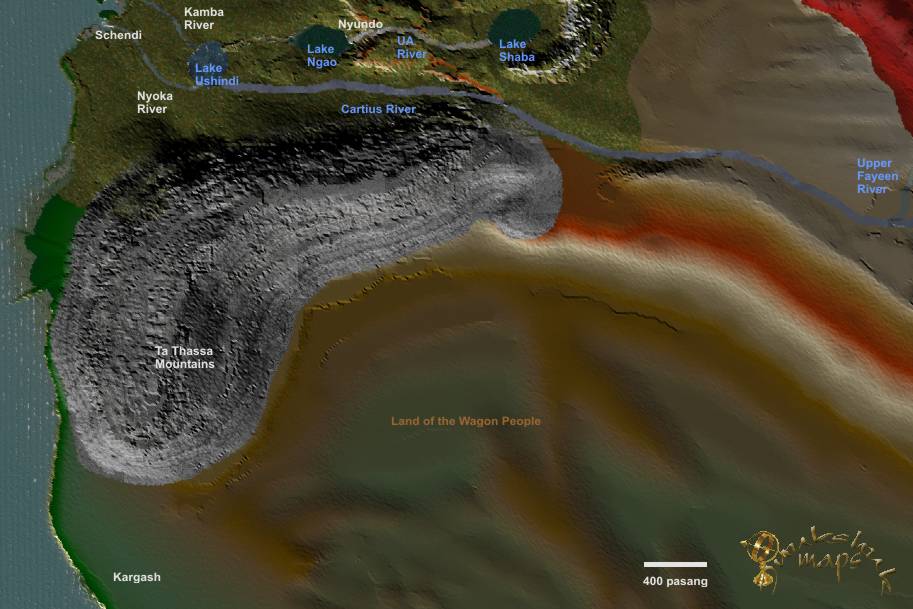
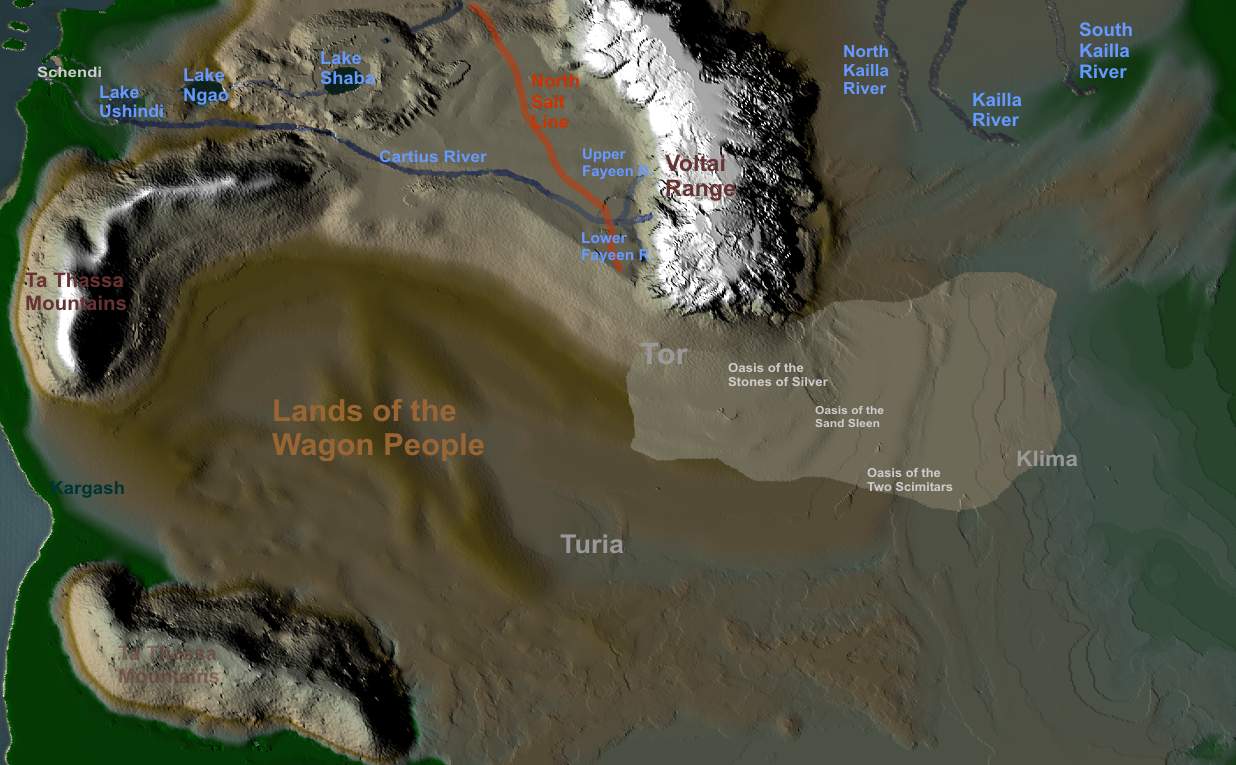
The area is thousands of pasang wide and thousands of pasang in length. The Plains cover a diversity of territory, including palm vegetated regions toward the Jungles, low lying parched grasses, mountain ledges along the Ta Thassa Mountains in the west and vast grasslands. Turia is located south of the Cartius River, south of Tor and lies in a valley.
Turia the high-walled, the nine-gated, was the Gorean city lying in the midst of the huge prairies claimed by the Wagon Peoples. Nomads of Gor Pg 1
...there was one large-trunked reddish Tur tree, about which curled its assemblage of Tur-Pah, a vinelike tree parasite with curled scarlet, ovate leaves, rather lovely to look upon; the leaves of the Tur-Pah incidentally are edible and figure in certain Gorean dishes, such as sullage, a kind of soup; long ago, I had heard, a Tur tree was found on the prairie, near a spring, planted perhaps long before by someone who passed by; it was from that Tur tree that the city of Turia took its name...Nomads of Gor Pg 217
The piercing of the ears of women, only of slave
girls, of course, was a custom of distant Turia, famed for its wealth
and its nine great gates. It lay on the southern plains of Gor, far below
the equator, the hub of an intricate pattern of trade routes.
Captive of Gor Pg 160
...Turia is a city of the far south, below the equator. It lies in the lands of the Wagon Peoples. There is little water closer to it than a thousand pasangs. Hunters of Gor Pg :43
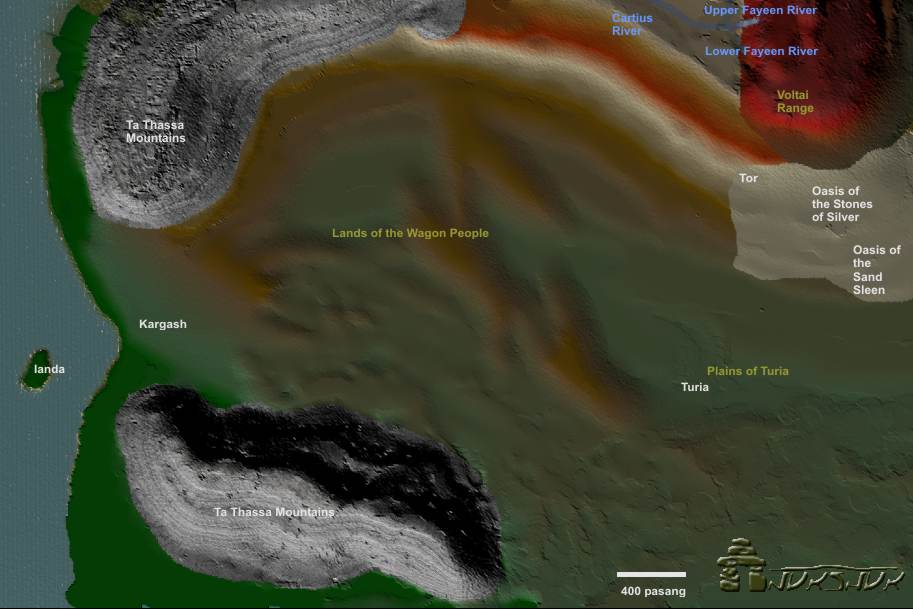
Turmas, on the south eastern edge of the Tahari is an outpost of Turia. Turia itself serves as the major city in the Plains, supplying goods and services to vast regions. Several caravans and travellers would meet in Turia and the 'Plains of Turia' or sometimes called the 'Plains of One Thousand Stakes' located near the city are well known as a meeting place for games and events such as the 'Love Wars' etc.
Before what, I asked myself, would even the black
larl flee; and I asked myself how far it had been driven; perhaps even
from the mountains of Ta-Thassa, that loomed in this hemisphere, Gor's
southern, at the shore of Thassa, the sea, said to be in the myths without
a farther shore.
Nomads of Gor Pg 2
Tor, lying at the northwest corner of the Tahari, is the principal supplying
point for the scattered oasis communities of that dry vastness, almost
a continent of rock, and heat, and wind and sand....Tribesmen of Gor Pg
36
Caravans with goods tend to travel the western, or distant eastern edge
of the Tahari; caravans do, it might be mentioned, occasionally travel
from Tor or Kasra to Turmas, a Turian outpost and kasbah, in the southeastern
edge of the Tahari, but even these commonly avoid the dune country, either
moving south, then east, or east, then south, skirting the sands. Few
men, without good reason, enter the dune country. Tribesmen of Gor Pg
179
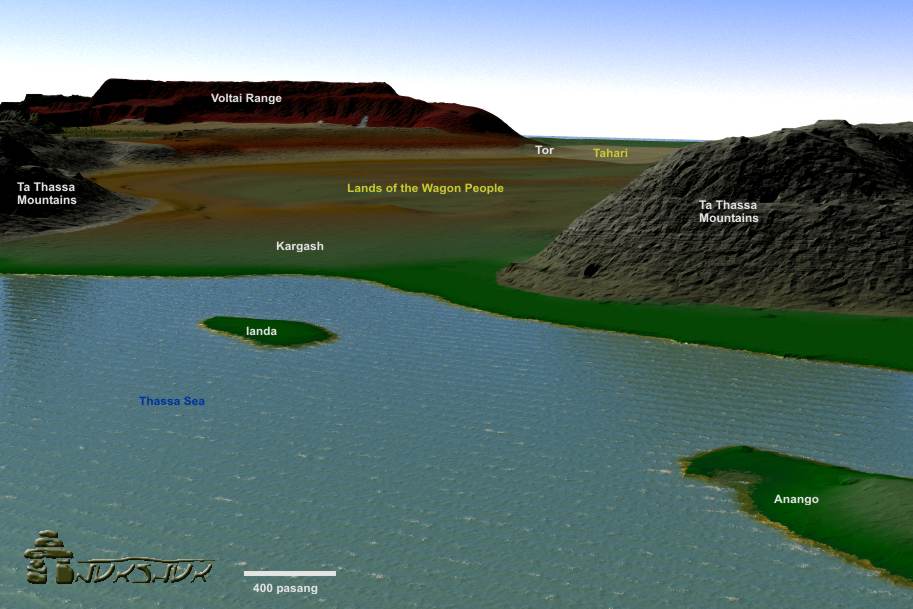
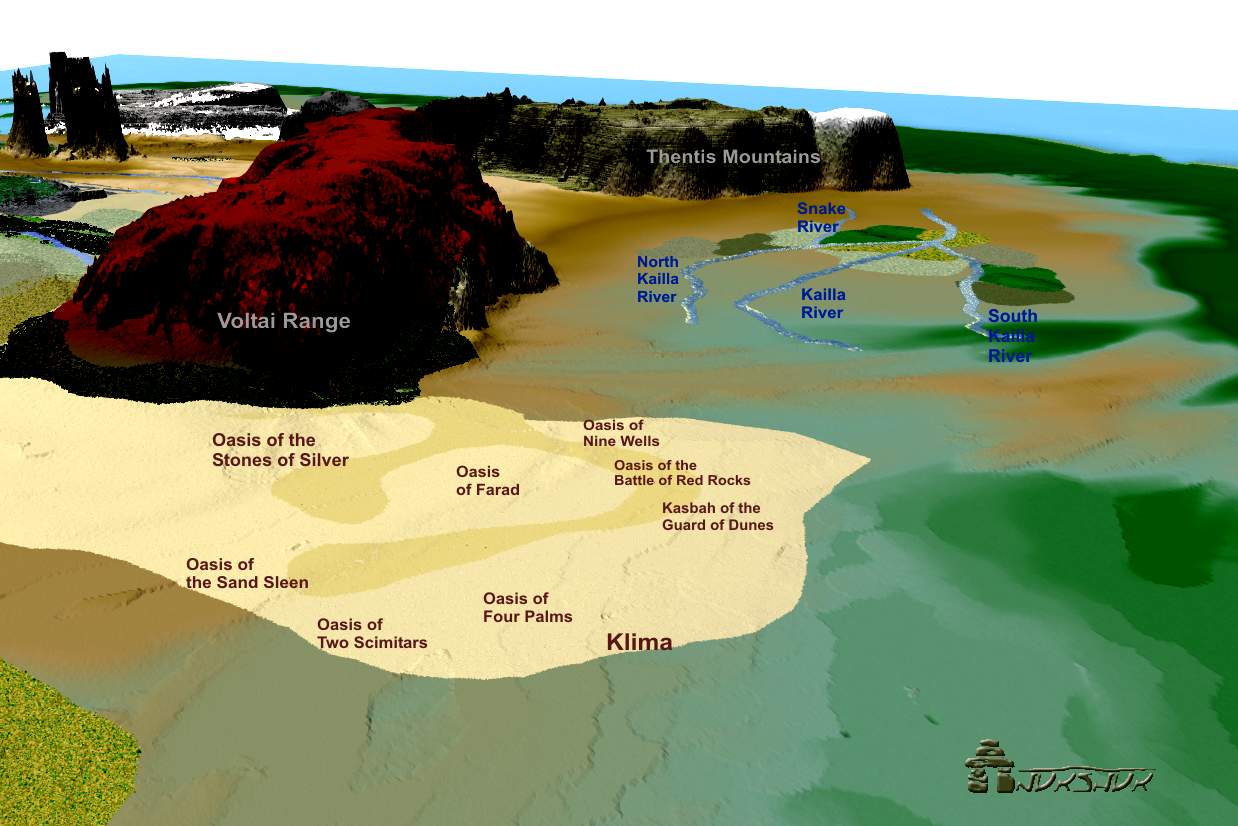
To the northern edges of the Plains lies the Cartius River which runs east-west serving as a natural northern border to the Lands of the Wagon Peoples. Palm trees abound there and the climate is warm, humid and much wetter than the open Plains.
The more central areas of the Plains are parched grasslands, intermixed with a variety of low lying grasses and rolling hills. It is difficult to defend oneself alone crossing the Plains. Tarn attacks could happen regularly and prairie sleen were in abundance. Water sources are hard to find in the plains, though there are areas with vegetation that have naturally occuring wells below the surface throughout the Plains.
The Wagon Peoples are known to migrate from north to south across this vast land in seasonal migrations. This includes the Kassar, Paravici, Kataii and the Tuchuk.
West of Tor, on the Lower Fayeen, a sluggish, meandering tributary, like the Upper Fayeen, to the Cartius, lay the river port of Kasra, known for its export of salt. Tribesmen of Gor Pg 33
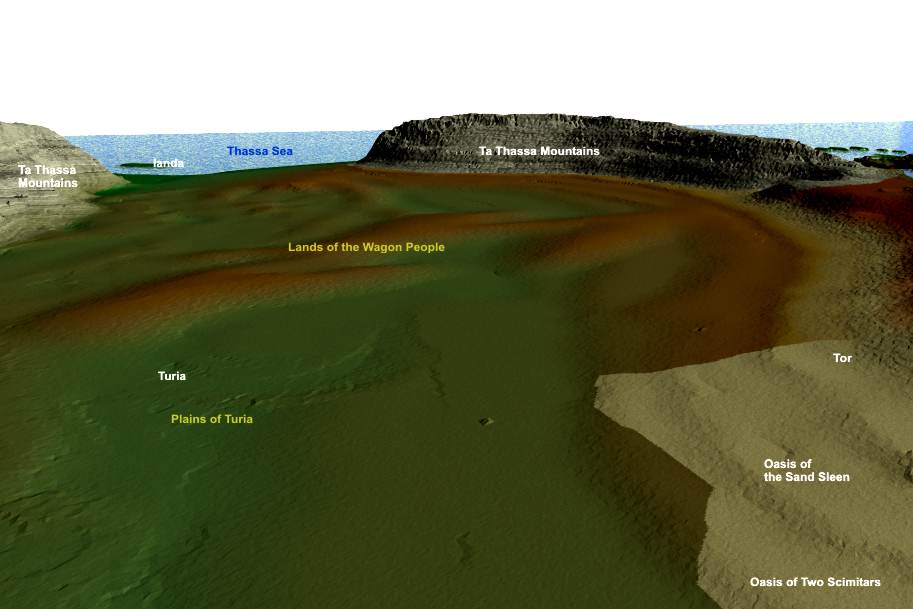
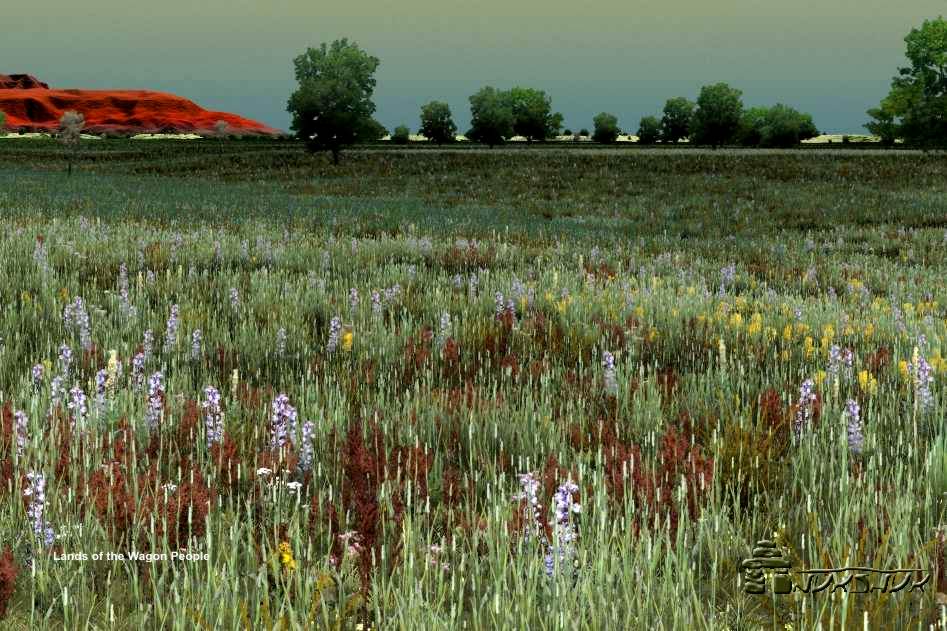
islands, with occasional free ports on the coast, north and south of the Gorean equator, such as Lydius and Helmutsport, and Schendi and Bazi, make possible the commerce between Cos and Tyros, and the mainland, and its cities, such as Ko-ro-ba, Thentis, Tor, Ar, Turia, and many others.
Raiders of Gor Pg 137
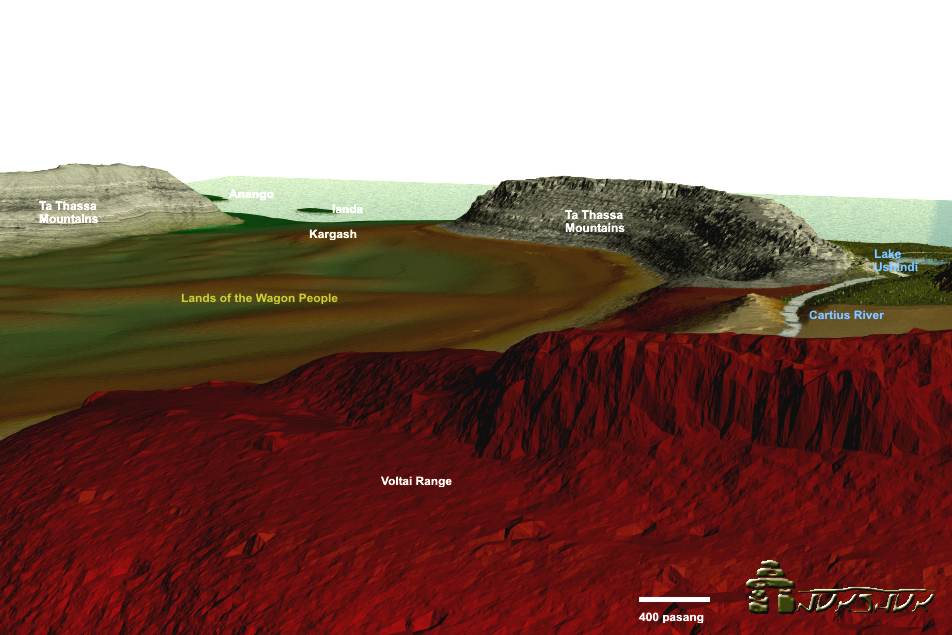
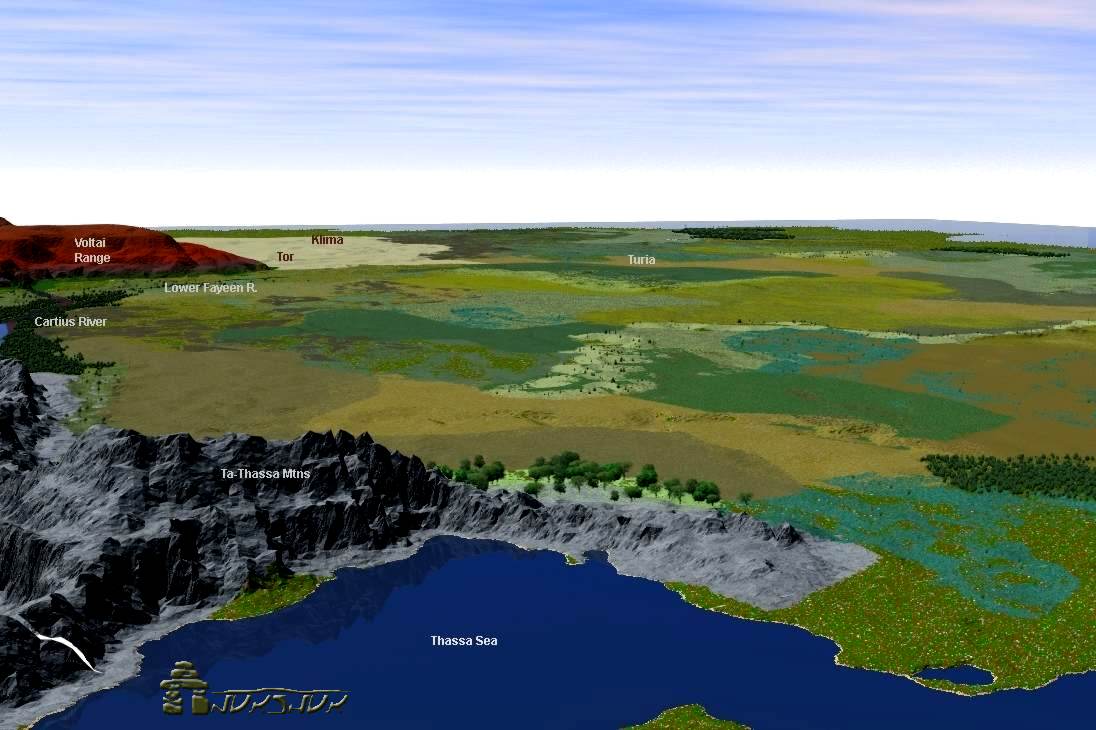
them. Players of Gor Pg 130
"Tell me what you know of the Cartius," he said. "It is an important subequatorial waterway," I said. "It flows west by northwest, entering the rain forests and emptying into Lake Ushindi, which lake is drained by the Kamba and the Nyoka rivers. Explorers of Gor Pg 16
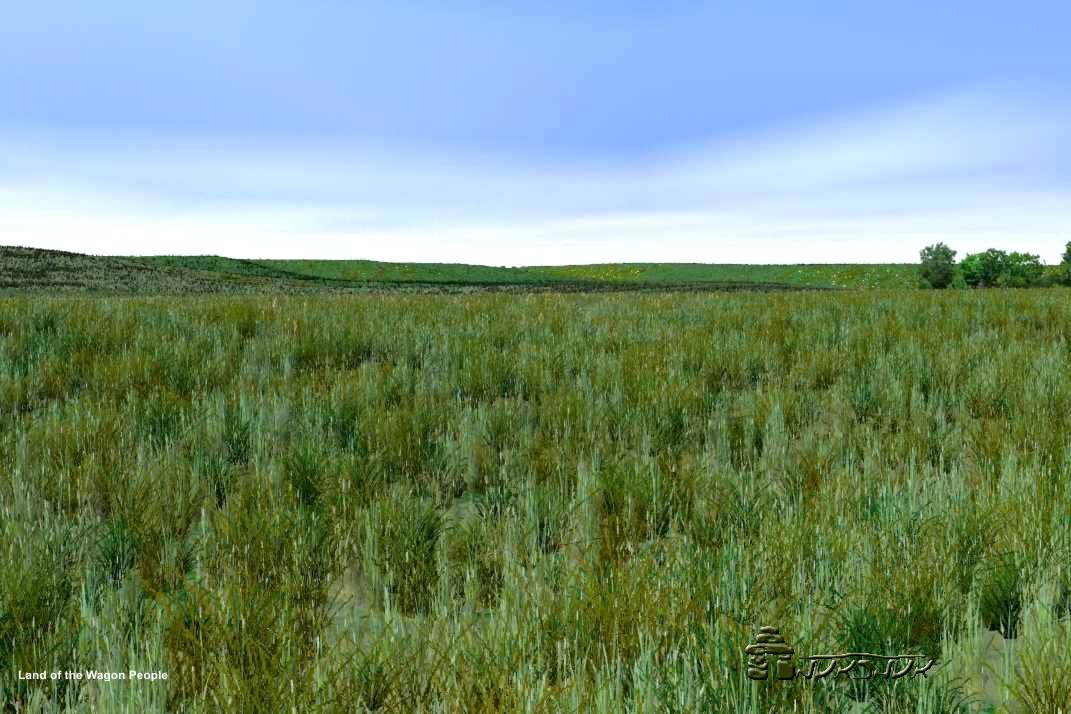
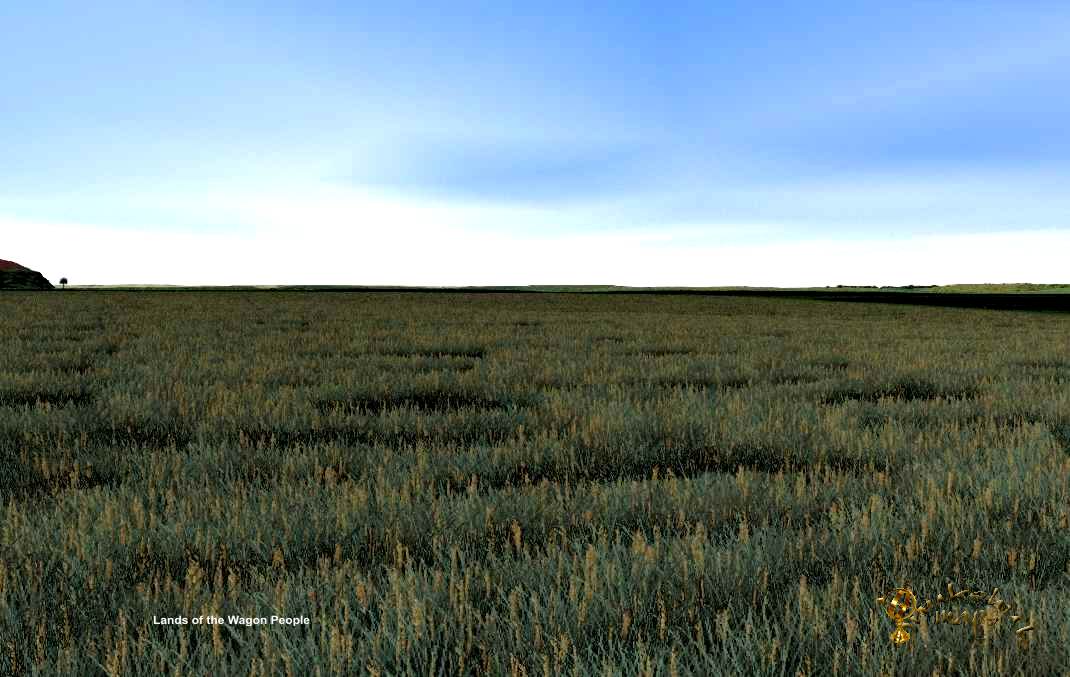
It is interesting to speculate on how Turia, in the middle of nowhere became such a major trading city. A closer look however shows that Turia is accessible from the North Silk Road and Salt Lines through Tor. It would be accessible and recieve goods also from small boats along the Cartius River moving inland from Schendi and lastly it would recieve goods from the city of Kargash to the west between the Ta Thassa Mountains and the Thassa Sea serving as a trade route.
Because there are seasonal migrations in the Plains this suggests that the climate varied considerably, therefore the abundance of plants and their changing colors would be prominent in the Plains.
The Voltai Range to the north and east could be seen from far distances across the plains due to its height and the mountains of Lake Shaba would also be visible from the northern regions of the Plains.
West of Tor, on the Lower Fayeen, a sluggish, meandering tributary, like the Upper Fayeen, to the Cartius, lay the river port of Kasra, known for its export of salt....Tribesmen of Gor Pg 32
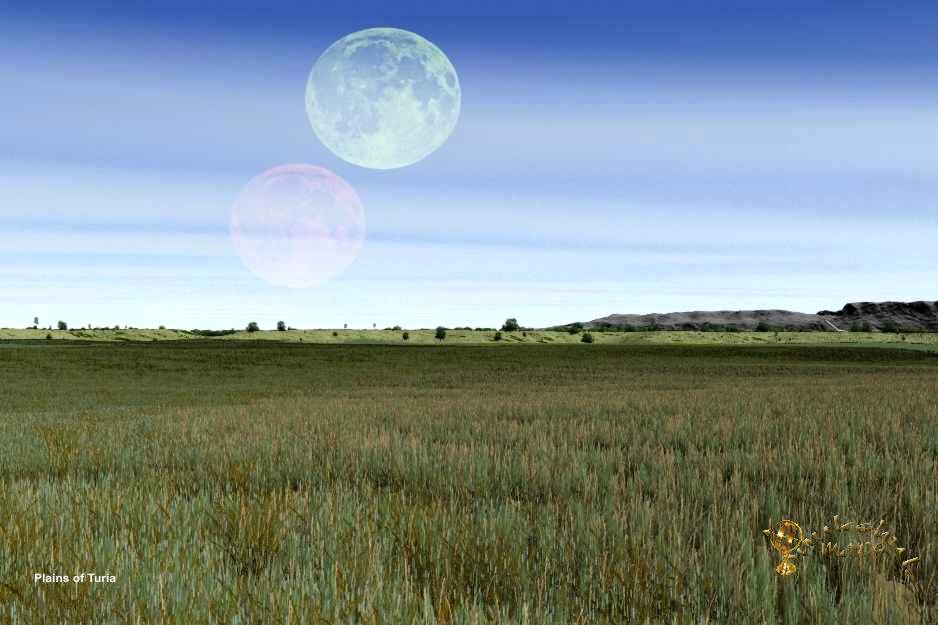
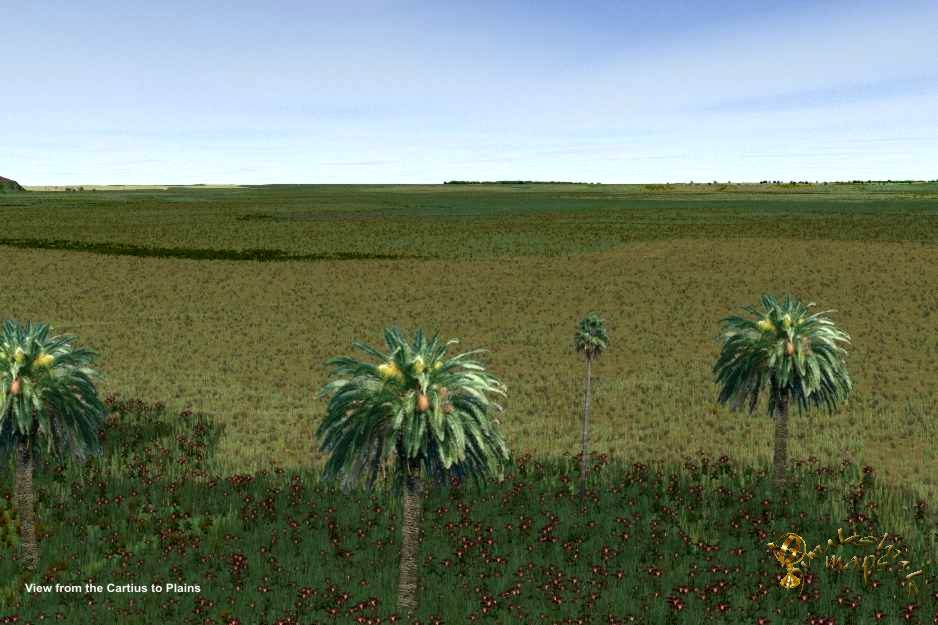
My thanks to 'autumn NS' for her help in this as
well as Karnik.
Thanks Lass.
All maps and images by Inukshuk may be freely used with acknowledgement.
Right click 'Save' for the larger images.
Inukshuk - 2002 - 2004